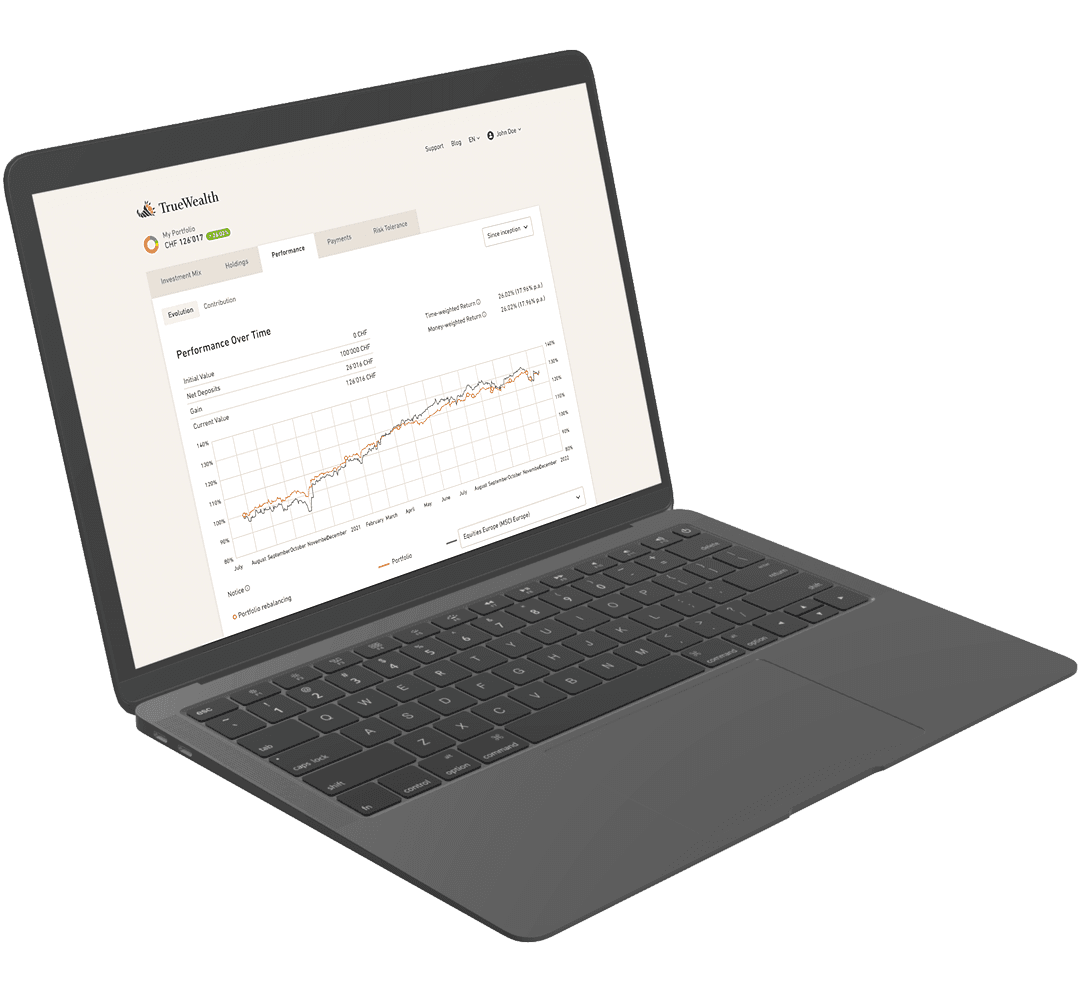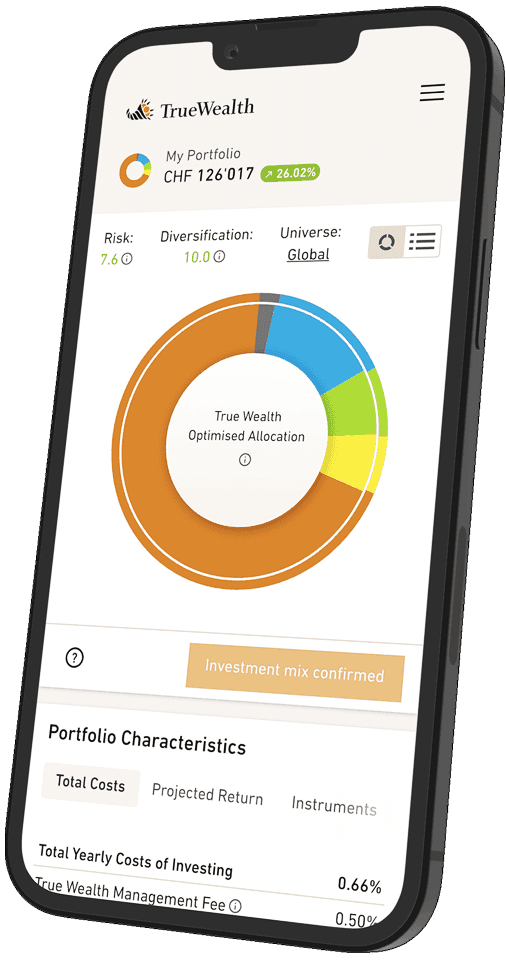Do currency-hedged investment instruments incur additional costs?
For many asset classes, for example American equities, currency-hedged investment instruments are available that hedge the risk of currency fluctuations, for example currency-hedged ETFs or index funds.
The costs of currency hedging are usually low. They arise from the fact that futures contracts (FX swaps) have to be rolled, i.e. exchanged, approximately every three months. The resulting bid/ask spreads of the forward contracts are in the range of a few basis points (hundredths of a percentage point) for the most important currencies (incl. CHF, USD, EUR, GBP, JPY). At most, for commercial reasons, the product costs (TER) are slightly higher for currency-hedged ETFs and index funds, which is why we always pay close attention to the TER when selecting investment instruments.
A side effect of currency hedging is that the interest rate differential between foreign currency and home currency (Swiss franc) is neutralised. This is in the nature of things, otherwise an arbitrage opportunity would arise and one could profit from the higher interest rates of the foreign currency without currency risk. No investor would buy more Swiss Confederation bonds (scientifically speaking, the law of covered interest rate parity applies) if 3.5% more interest were paid on US Treasuries.
Sometimes, therefore, it is wrongly argued that the interest rate difference is the cost of currency hedging. This is a fallacy, because historically, currencies with higher interest rates have often depreciated against currencies with lower interest rates. If we look at the period 1989 to 2021, for example, interest rates on US dollars were higher on average than interest rates on Swiss francs, but the exchange rate loss completely compensated for the interest rate advantage.
More questions in "Pillar 3a"
Can’t find what you’re looking for?
Contact us
Ready to invest?
Open accountNot sure how to start? Open a test account and upgrade to a full account later.
Open test account